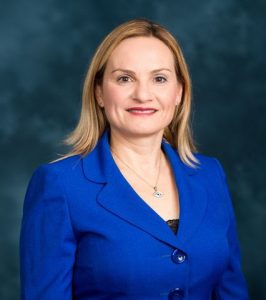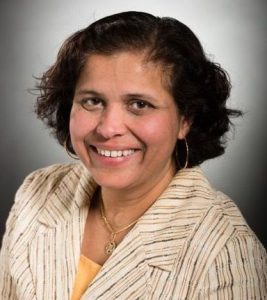[The following notes were generated by Rebecca Rowe, PhD.]
IAMSE Webinar Series, Spring 2020
Speakers: Anna Change, MD, Director, Clinical Microsystems Clerkship, University of San Francisco School of Medicine; Adrienne Green, MD, Chief Medical Officer and Vice President for Patient Safety and Accreditation, University of San Francisco Health System and Edgar Pierluissi, MD, Director, Health Systems Improvement, University of San Francisco School of Medicine.
Title: “Health Systems Sciences: The Pre-Clinical Years in Medical Education”
Series: Evolution and Revolution in Medical Education: Health Systems Sciences
Objectives for the Session:
1. Identify the importance of health systems science in medical student education
2. Describe one sample strategy for integrating health system science with basic and clinical sciences in pre-clinical undergraduate medical education
3. List benefits of value-added student roles from the perspective of health system
During the session the following sections will be addressed:
1. What is health systems science and why is it important to medical education? Presented by Dr. Edgar Pierluissi.
2. How do we teach HSS in the pre-clerkship years? Presented by Dr. Anna Chang
3. Why do academic health centers want HSS education? Presented by Dr. Adrienne Green
Dr. Pierluissi started by reminding us the definition of HSS.
HSS is defined as “the study of how health care is delivered. It seeks to improve the quality of health care for patients and populations”. American Medical Association
1. Why is HSS important to Medical Education?
• Quality
• Patient Complexity
• Cost
Quality (JAMA, 2018; 319 (10); 1024-1039)
• There are many areas where American medicine doesn’t deliver care that we know can be achieved, although there are some areas of excellence.
• When comparing to the other wealthy countries, the USA ranked highly in Clinical Outcomes (1st), but did not do as well in other domains such as Access (6th), Perception of care (10th) and Disparities in Health Care (11th).
• There are significant gaps in health care quality across the US such as either overuse of diagnostic imaging or underuse of cancer screening.
• Basically, the quality of care in the US is not what is should be.
• The inclusion of HSS in medical education is a response to this problem.
Patient Complexity
• As patients age, the number of patients with complex medical and psychosocial factors is increasing.
• Patients that present with 4 or more co-morbidities increases with age.
• This population of patients disproportionately account for poor health outcomes and health care costs. ( J Amer Board of Fam Med 2018)
• In summary, “as the number of patients with multimorbid, complex, and medical and psychosocial factors increase, health outcomes will depend more on teams and systems of care than the individual physician.”
Cost
• The US spends more, by far, on health care than other wealthy countries.
• The cost of health care has consequences.
• Data shows that at least 25% of Americans, or a family member, delayed care for a serious health medical condition owing to the cost of care. (The Washington Post 2019)
• One-third of people that filed for bankruptcy confirmed the cost of health care was a contributing factor.
• Adhering to evidence, aligning care with patient’s values, increasing collaboration and care has the potential to reduce waste.
• Much of the cost of health care is due to waste.
• The aim of HSS in medical education is to reduce waste and to increase the value of care.
This concludes this section on the Drivers for HSS in Medical Student Education. By incorporating HSS in medical education, future physicians will be better equipped to participate in and lead systems change that addresses these issues, not alone, but part of a larger solution.
2. How do we teach HSS in pre-clerkship years? Presented by Anna Chang
Concerns for integrating HSS: (Gonzalo et al. Academic Medicine 2018 and 2019)
• Pre-clerkship medical students…is it too early?
o Feel it is not too early as students bring in a fresh perspective and motivation to make the world a better place.
• The medical student curriculum is already packed. Where do we put this?
o Through a process of re-envisioning, integration, and thoughtful change management are strategies that make this important transformation feasible.
• Clinical Faculty never learned this. Who will teach it?
o Through the strategy of co-learning and expansion of the definition of “educator” has helped to address this gap.
• Health systems are still working to improve. How can they partner to teach students?
o Invited the students to join the faculty to improve this together!
In addition to lectures and small classroom learning, there are a number of ways medicals in the US, Canada and the UK, have engaged medical students in experiential learning of HSS.
HS Experiential Learning Models
• Students can act as Patient navigators for individual patients
• Students can serve as Medical scribes for individual clinicians
• Engages students in Patient population health managers for groups of patients
• Medical Students serve as Quality improvement team members for health systems
The remaining of this section will explain how UCSF School of Medicine uses Medical Students as Quality improvement team members for health systems.
UCSF School of Medicine and PharmD program starts the New Bridges Curriculum in 2016.
The rest of this section will focus on foundation 1, which is the phase that encompasses the first and second years of medical school.
For UCSF School of Medicine, HSS is taught in multiple places with the focus being in the Clinical Microsystems Clerkship, which is a longitudinal element that combines direct patient care with health systems improvements. This is where experiential learning focus on quality improvement occurs.
Therefore, the goals of Clinical Microsystems Clerkship is to help early learners to learn:
• Health Systems Improvement
• Interprofessional Collaboration
• Direct Patient Care
Components critical to this curriculum:
• Faculty development
• Lectures and small groups
• Projects applying learn
3. Do academic health centers want HSS education presented by Dr. Adrienne Green.
Dr. Green shared with the audience why academic medical centers like UCSF want to collaborate with educational leaders to develop these types of programs.
Dr. Green presented Why HSS? From a Chief Medical Officer Perspective.
• Formal experiential training is far more effective than learning by doing on the job and I wish I’d had this kind of training in medical school.
• Students enter medical school eager to contribute to positive change, and for exposure to improvement strategies and policy implications.
• Early introduction and engagement in local health care value (quality/cost) work is key.
• Systems based practice is a core competency for students, residents, fellows, and practicing physicians, so there is a need to build these skills for the long term, regardless of their site or their type of practice.
• For UCSF, alignment of student quality improvement projects with UCSF Health True North priorities and Lean strategies is the key.
• Health systems and educational leaders collaborate and iterate each year.
• Training for physicians coaches and students includes:
o Health systems priorities to guide project selection and design
o Lean improvement methodology (same as health system)
• Students integrate into existing improvement teams and ongoing work.
• Students are seen as unique contributors to teams and expand the improvement workforce.
What is meant by Lean tool?
• Dr. Green discussed an example called “A3 Thinking” as a way of problem-solving and documenting their project work than contains the following parts:
o Problem
o Current state
o Target
o Gap analysis
o Experiments
o Action plan
o reflection
• This forces then to fully work through the problem they are trying to solve, at the current state in that particular area to determine the root cause of the problem, before developing their intervention and action plans.
The last part of Dr. Green’s session took us through one of the UCSF student presentations illustrating the work they are doing.
Take-home points by:
Dr. Pierluissi: Because of the gaps in our health care systems, today’s medical educators need to add HSS early in undergraduate medical education.
Dr. Chang: There are models to integrate HSS into the classroom and experiential learning in the first two years of medical school for early students.
Dr. Green: Academic health system leaders perceive an alignment and value in having early medical students engaged in health systems improvement.





